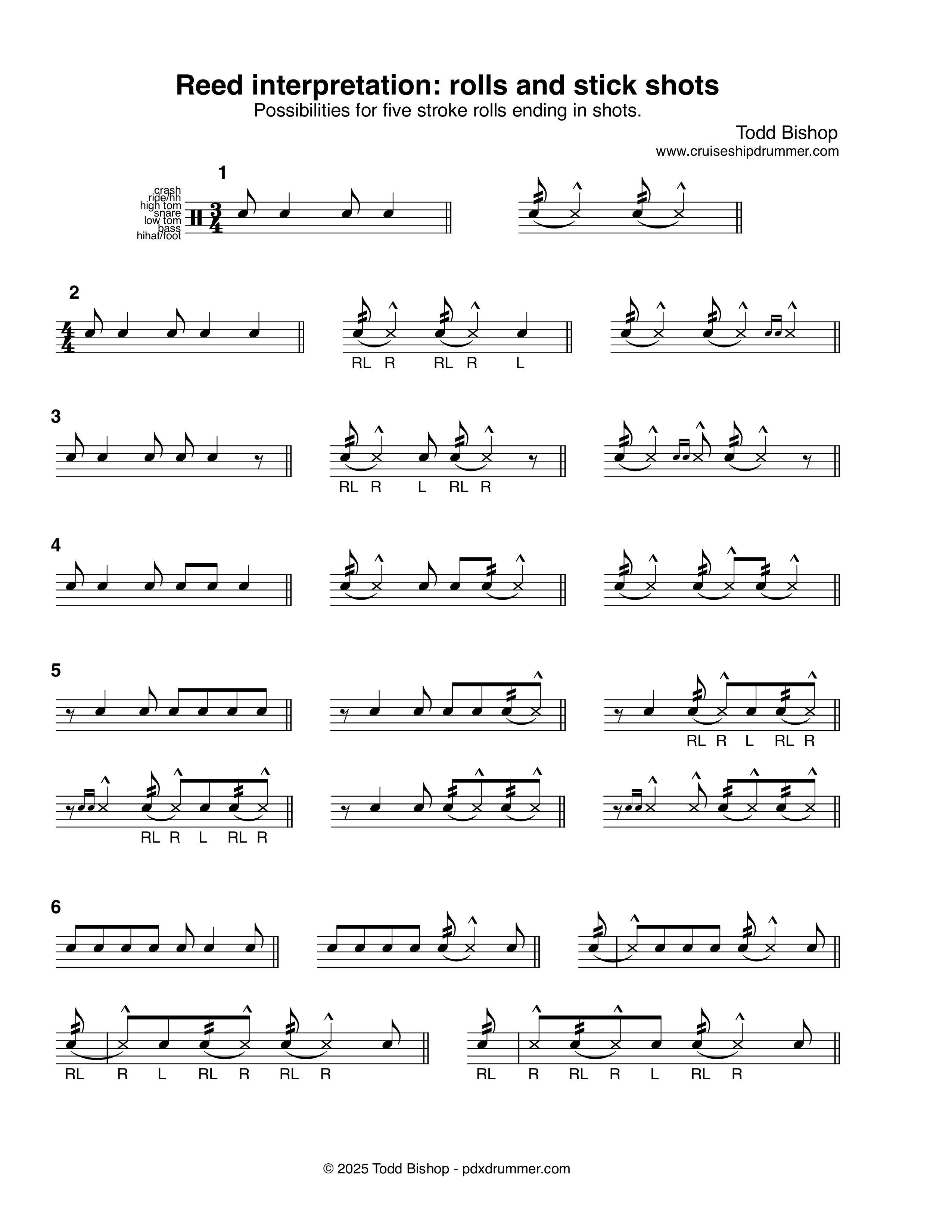A short item— that’s all I have time for lately: some hybrid Syncopation-based systems are brewing, where we do one basic thing, and alter it one step further, creating some connections between ideas, and opening things up, so it’s not pure formula. It also creates some problems in devising a consistent system, and with interpreting it on the fly, when reading the full page exercises.
Here we’ll use a bebop-type system based on 5-stroke rolls ending in a stick shot— similar to this one. Everywhere you see an 8th note followed by a quarter note, play a 5-stroke roll (starting with the RH) ending with a stick shot (R stick hitting L stick, which is pressed into the drum head). Play the remaining notes as taps, mostly alternating sticking— starting with the LH, after the stick shots.
So the first two lines of page 38 in Syncopation would be played like this:
That leaves a lot of open single notes, which we can fill in in a different way— like with the stupidly-named paradiddle inversion stickings we did recently: RLLR/LRRL/RLLRLR/LRRLRL. Pick the appropriate-length pattern for the space you’re filling. Add more alternating singles at the end of the pattern if you run into some longer spaces between notes.
Here’s how you could handle some single line exercises from p. 34 in Reed:
Note that the 16ths can connect directly with the roll, but you don’t go directly into the 16ths from the stick shot. Also, we have to plan ahead for what hand to start the 16ths with, so you end on the right hand, to make the roll.
This is probably strictly a system for practicing one measure licks, using pp. 34-37 in Reed. If you try playing one of the full page exercises, you’ll notice that a) it’s pretty hard to interpret on the fly, and b) it’s hard to know which hand to start the 16ths with. You would have to figure out which hand to start with, and mark it on the page.
Listen to some Roy Haynes soloing, and have fun.



